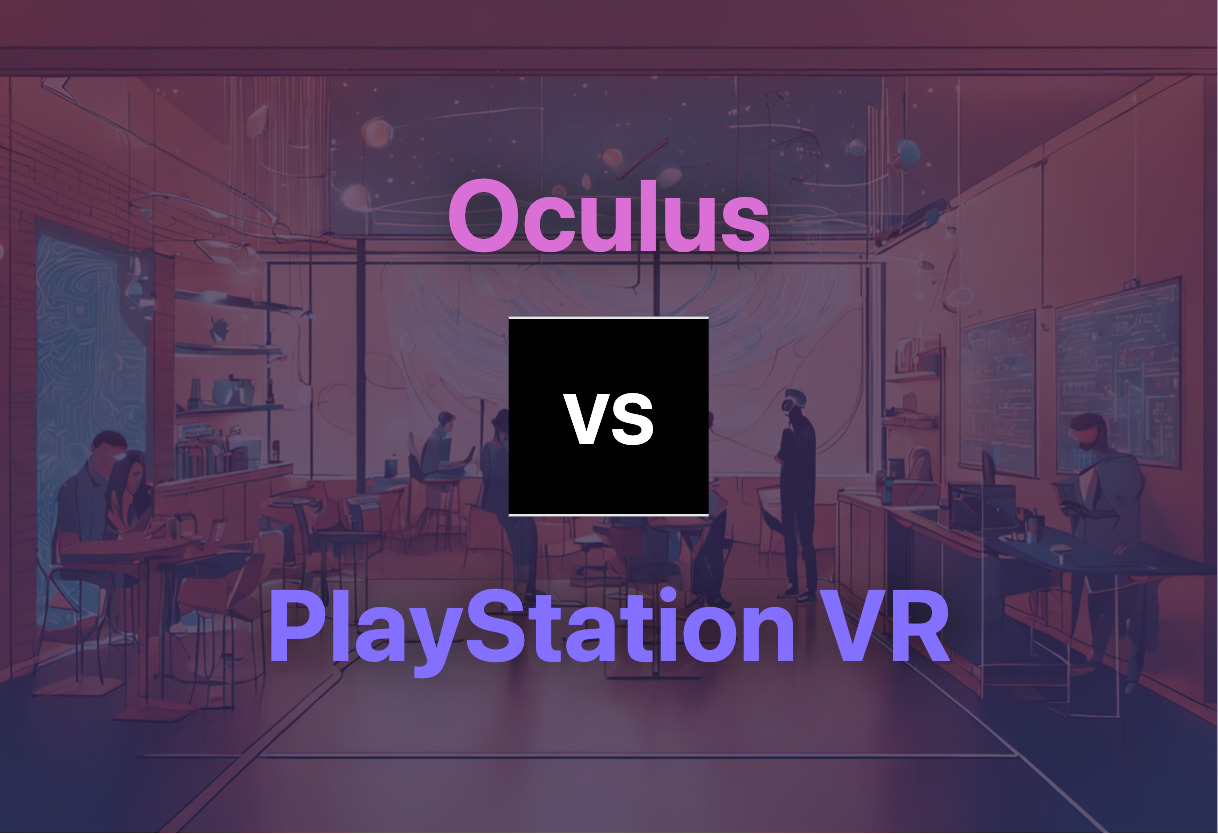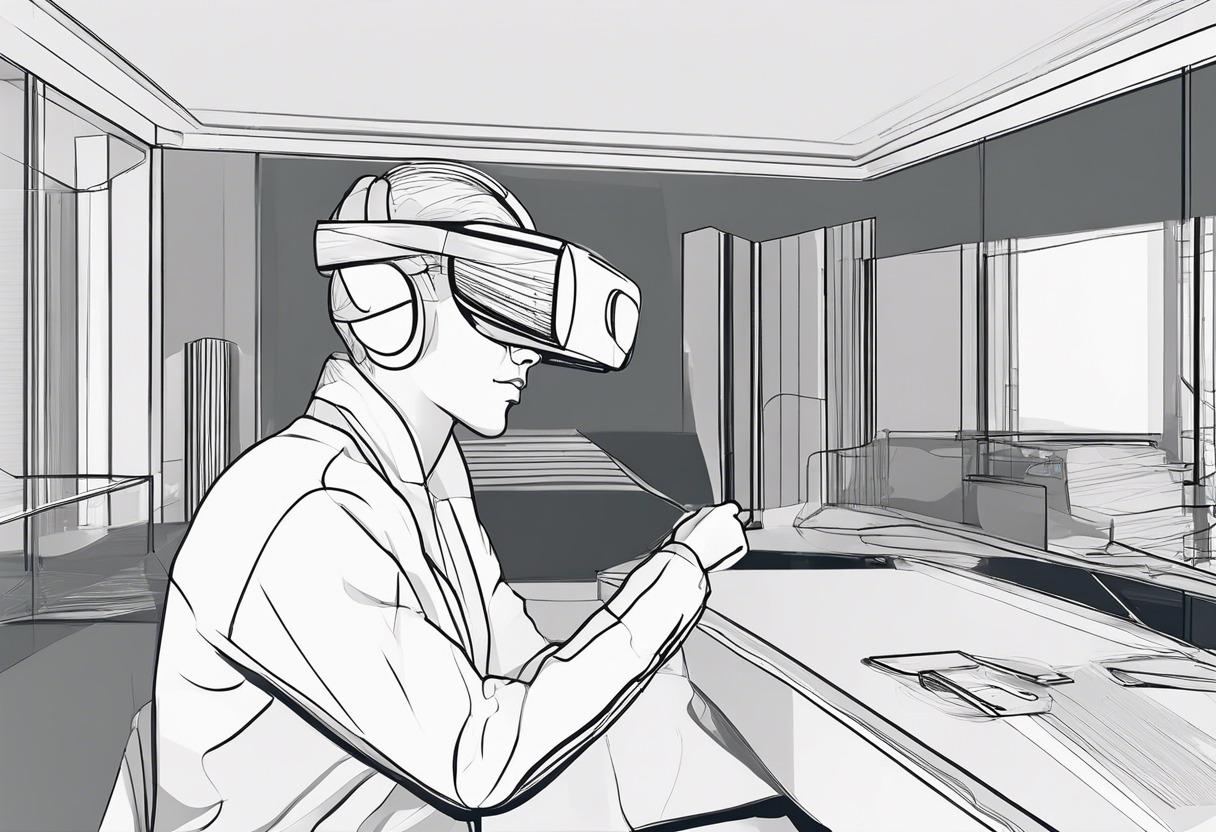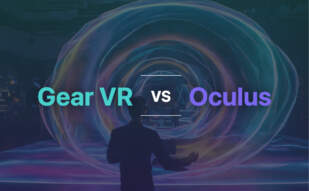Choosing between Oculus Rift and PlayStation VR pivot on use-case and platform preference. Oculus Rift is favoured for superior comfort and image quality, largely aimed at PC users. PlayStation VR however, reigns for console-oriented users, with a hefty choice of exclusive games but less robust performance.

Key Differences Between Oculus Rift and PlayStation VR
- Platform: Oculus is PC-focused, PlayStation VR is console-based.
- Tracking: Oculus uses three-axis gyros, accelerometers, and magnetometers. PlayStation VR performs poorer, highly affected by room lighting conditions.
- Price: PlayStation VR is cheaper than Oculus Rift.
- Games: PlayStation VR provides exclusive games, Oculus offers a wide software library.
- Comfort & Quality: Oculus leads in comfort and image quality, PlayStation VR showcases impressive design.
| Comparison | Oculus Rift | PlayStation VR |
|---|---|---|
| Initial release | March 2013 | October 2016 |
| Resolution | 1280×800 total, effectively 640×800 per eye | 1080p display resolution |
| Tracking Technology | Three-axis gyros, accelerometers, and magnetometers | 9 positional LEDs |
| Headset Release | Oculus Rift CV1 in March 2016 | October 2016 |
| Price Point | Accessible price | More affordable than high-end counterparts |
| Software Library | Compatible with successor, Oculus Quest | Impressive selection of games that continue to update |
What Is Oculus Rift and Who’s It For?
Oculus Rift, a realm-defining line of VR headsets, was piloted by Oculus VR with Palmer Luckey’s forward-thinking vision to resuscitate the VR industry. The primary revelation was the Oculus Rift DK1 in 2013, the first of its kind to offer immersive experiences at an accessible price. Over time, evolving iterations, like Oculus Rift S in 2019, kept boosting the VR quality while managing costs.
The Oculus Rift line targeted tech-savvy, thrill-seekers desiring a realistic virtual experience. Be it video gamers, simulative trainers, or even a common man with a knack for cutting-edge technology are the prime audience of Oculus Rift.

Pros of Oculus Rift
- Offers a generous FOV.
- High resolution display.
- Incorporates unique technologies for improved quality.
- A good selection of VR games from the Oculus library.
Cons of Oculus Rift
- The Oculus Rift line has been discontinued.
- Facebook’s data privacy policies can be a turn-off.
- High-performance PC requirement for best experience.
- Limited room-scale tracking.
What Is PlayStation VR (PS VR) and Who’s It For?
Developed by Sony Interactive Entertainment, PlayStation VR (PS VR) is another prestigious contender in the VR platform. Launched in 2016, the PS VR has proven to be a practical yet exhilarating device, leveraging PS4, and proving compatibility with PS5.
Targeted primarily at PlayStation’s hefty user base, the PS VR is ideal for gamers wanting to immerse themselves in rich, pulsating VR games or experiences whether competitive or cooperative. It tailors itself to an audience that values affordability without skimping on quality.

Pros of PlayStation VR
- Compatible with PS4 and PS5.
- Lower price point compared to high-end competitors.
- Access to vast and updating collection of VR games.
- Doubles up with headphones for 3D audio effect.
Cons of PlayStation VR
- Requires a well-lit, strictly tracked play space.
- Not as technologically advanced as high-end competitors.
- Performance dictated by room’s lighting condition.
- Inferior tracking performance compared to HTC Vive.
Choosing Your Virtual Companion: Oculus vs PlayStation VR
Embarking on an enthralling AR/VR journey? The monumental task ahead is deciding: Oculus or PlayStation VR? Let’s dissect.
The VR Enthusiast
Oculus Rift, with its rich history, plays seamlessly into the enthusiast’s narrative. From Palmer Luckey’s novel approach to geometric pre-distortion to Facebook’s acquisition, Oculus Rift has made immense strides in the VR realm. Flaunting a Field of View more than 90 degrees horizontal, it obliterates the screen door effect, offering unparalleled clarity. However, if uninterrupted movement is crucial, the HTC VIVE, a sensor-based tracking headset, is the one for you.

The Gaming Aficionado
The PlayStation VR is the go-to-gear for the gaming fanboy. Not only does it flaunt a 5.7 inch OLED panel rendering vivid graphics, it synchronises effortlessly with PS4, making it a formidable gaming contender. The cherry on top – its ability to output picture to both VR headset and TV simultaneously, paving the way for competitive or cooperative gameplay.

The Quality Seeker
Oculus Rift beats the PlayStation VR if you’re a tech savoy quality seeker. Oculus offers a large stereoscopic field-of-view, low-persistence of vision, and better resolution. But keep in mind, PlayStation VR, though with impressively minimal screen door effect, could be perceived grainy by the truly discerning.

For the VR enthusiast, Oculus Rift’s tech savviness makes it a front-runner, while gaming aficionados would sway towards PlayStation VR’s gaming prowess. Quality seekers demand Oculus Rift’s superior resolution. Hence, Oculus Rift emerges as sophisticated, immersive; PlayStation VR tantalizes gamers.
Tiffany Brise
Content writer @ Aircada, patiently awaiting a consumer AR headset that doesn’t suck.





